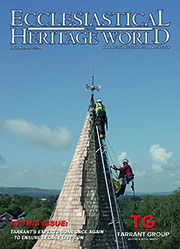Awards commendation for Icynene-insulated historic property
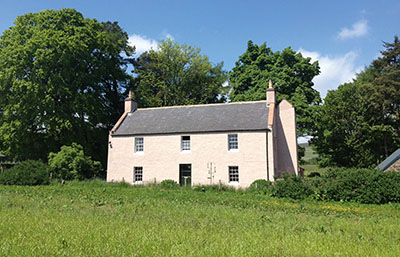 The successful insulation of a 250-year-old farmhouse in rural Aberdeenshire has received a Commendation in the Scottish Energy Efficiency Awards, which took place in Glasgow this summer.
The successful insulation of a 250-year-old farmhouse in rural Aberdeenshire has received a Commendation in the Scottish Energy Efficiency Awards, which took place in Glasgow this summer.
Bogendollo House, an early 19th century category C listed building at Fettercairn near Aberdeen, was the subject of an extended trial to assess the viability of high performance spray foam insulation as a means of preventing heat loss in architecturally significant buildings.
Read more: Awards commendation for Icynene-insulated historic property
York Handmade highly commended in two major awards at Brick Oscars
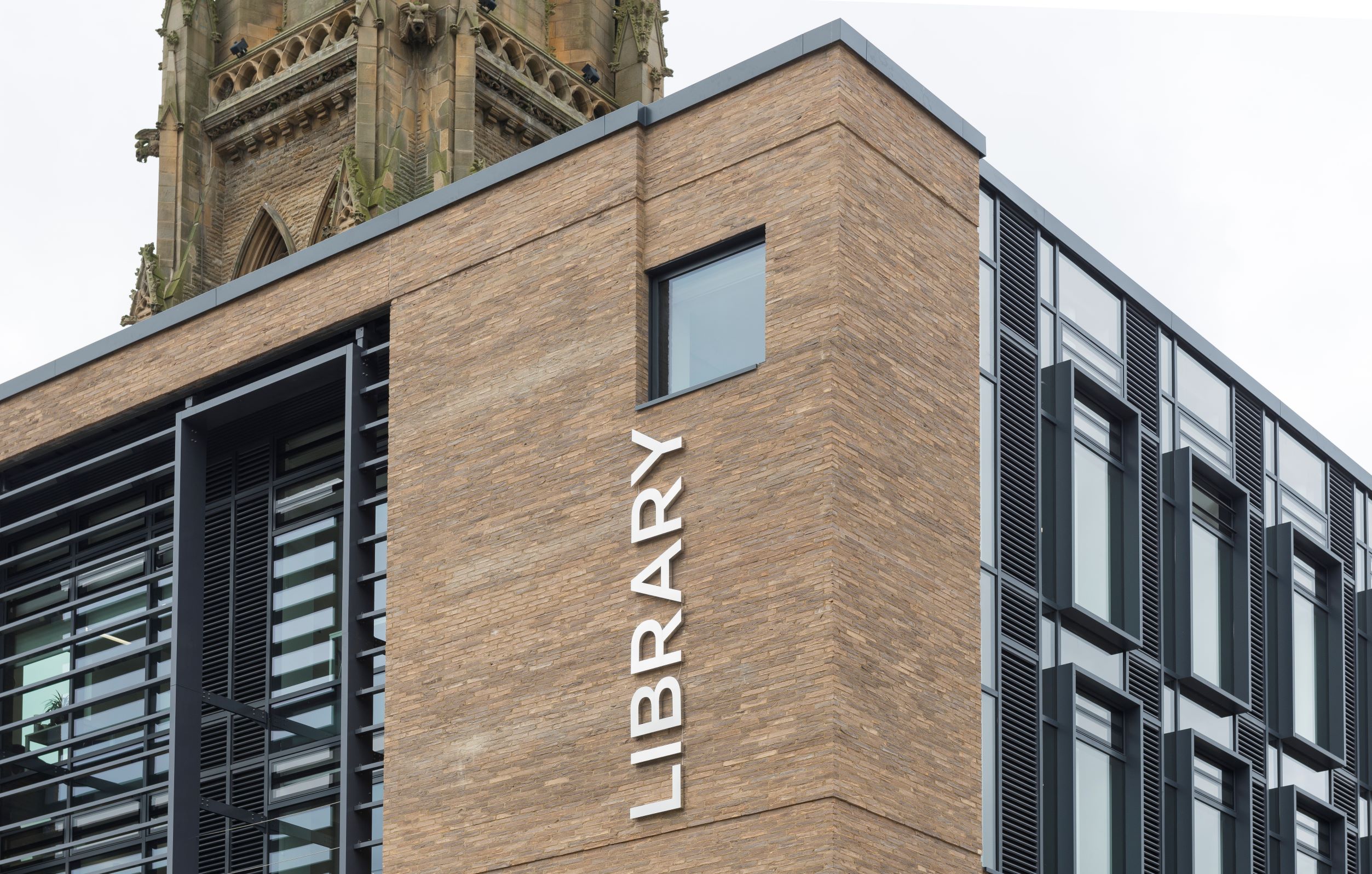 The York Handmade Brick Company has been highly commended for two major projects in the prestigious 2018 Brick Awards.
The York Handmade Brick Company has been highly commended for two major projects in the prestigious 2018 Brick Awards.
Leading independent brickmaker York Handmade, based at Alne, near Easingwold, was recognised for its work on the acclaimed new Westgate Centre in the heart of historic Oxford and for the magnificent new Halifax Library.
Read more: York Handmade highly commended in two major awards at Brick Oscars
Crossman Homes to breathe new life into Bristol’s Whitfield Tabernacle
 Bristol's iconic Whitfield Tabernacle, one of the most at risk Grade One listed buildings in the UK, has taken a big step towards being saved thanks to a partnership between Crossman Homes and the Whitfield Tabernacle Trust.
Bristol's iconic Whitfield Tabernacle, one of the most at risk Grade One listed buildings in the UK, has taken a big step towards being saved thanks to a partnership between Crossman Homes and the Whitfield Tabernacle Trust.
The Kingswood building, dating back to 1741 and widely regarded as the birthplace of the Methodist movement will, under plans being put forward, be renovated and redeveloped as a community space.
Read more: Crossman Homes to breathe new life into Bristol’s Whitfield Tabernacle
Armistice Day tribute sees ‘lost’ memorial displayed
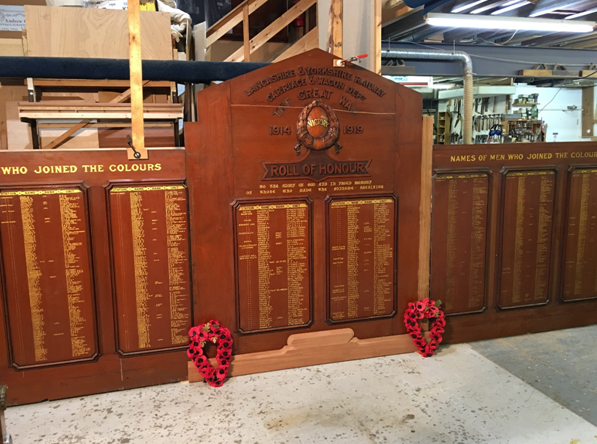 During the lead up to Armistice Day thoughts were focused on the centenary of the end of hostilities in the First World War.
During the lead up to Armistice Day thoughts were focused on the centenary of the end of hostilities in the First World War.
At furniture restorers Andrew G Podmore & Son in York restoration work is progressing well on the memorial for members of the Lancashire and Yorkshire Railway who lost their lives in the conflict.
At the outbreak of war in 1914 the company had a 37,000 strong workforce. Over 10,000 would volunteer for the armed forces and 1,422 would lose their lives.
Read more: Armistice Day tribute sees ‘lost’ memorial displayed
Alutec products help revive Thursford Castle
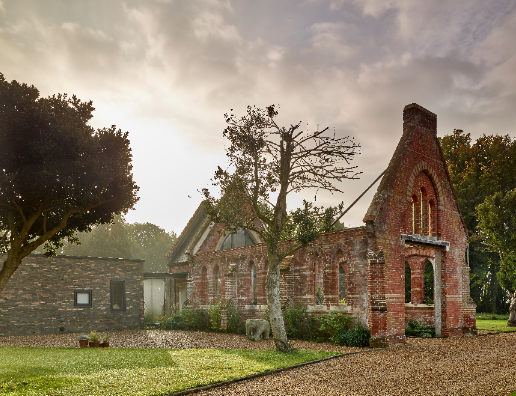 Marley Alutec’s Evoke eaves solutions and Evolve rainwater ranges have perfectly complemented the uniquely modern character of a stunning residential project, Thursford Castle, which incorporates the ruins of 19th century chapel.
Marley Alutec’s Evoke eaves solutions and Evolve rainwater ranges have perfectly complemented the uniquely modern character of a stunning residential project, Thursford Castle, which incorporates the ruins of 19th century chapel.
Derelict since the 1930s, the 180-year-old chapel is now the focal point of the Great Snoring-based development, with the ruined walls forming the entrance courtyard to a single storey, contemporary-designed home.
LSTA appoints new General Manager
 The Lead Sheet Training Academy is pleased to announce the appointment of new General Manager, Nick DuGard, who will be leading the organisation in its next phase of development.
The Lead Sheet Training Academy is pleased to announce the appointment of new General Manager, Nick DuGard, who will be leading the organisation in its next phase of development.
Nick joins the organisation with a wealth of experience relevant to the construction training sector, having spent 15 years at City and Guilds as a Regional Business Manager where he was responsible for the delivery of sales revenues, business solutions and the development of a broad range of qualification products throughout the UK.
As well as an in-depth understanding of the work-based training sector, he also brings a breadth of knowledge in wider funding potential as he has worked as a business and fundraising consultant in the sports world.
Grant funding for repair and conservation of war memorials
 War Memorials Trust aims to help all war memorial custodians, whatever the nature and size of their war memorial by facilitating repair and conservation projects through grant funding and/or best conservation practice advice.
War Memorials Trust aims to help all war memorial custodians, whatever the nature and size of their war memorial by facilitating repair and conservation projects through grant funding and/or best conservation practice advice.
As the centenary of World War I draws to an end there is currently high demand for grants so just because a project is eligible for funding does not mean the Trust can guarantee a grant can be made. All grant applications are subject to available funding with support given to those memorials where there is greatest need. To find out more about funding read the Trust's What we fund advice or Apply now.
Read more: Grant funding for repair and conservation of war memorials
Before the winter sets in – building maintenance for heritage buildings

Heritage properties can be particularly susceptible to the winter weather however, careful maintenance and proactive management can help reduce the risk of property damage and injury to those that visit your property during the colder months.
As a specialist insurer, Ecclesiastical is uniquely positioned to provide some simple practical advice that can help keep your property and its visitors safe as the cold weather approaches.
Read more: Before the winter sets in – building maintenance for heritage buildings
Ecclesiastical urges government to reduce VAT on repairs and approved alterations to listed buildings
 Ahead of the Autumn Budget, specialist insurer Ecclesiastical is urging the government to reduce VAT on repairs and approved alterations to listed buildings.
Ahead of the Autumn Budget, specialist insurer Ecclesiastical is urging the government to reduce VAT on repairs and approved alterations to listed buildings.
Ecclesiastical is supporting organisations such as the Heritage Alliance and the Listed Property Owners’ Club, which are calling for VAT to be reduced to 5% on repairs and approved alterations to listed buildings to help owners protect such an important part of the nation’s heritage.
Murdoch Award winner has royal seal of approval
 Each annual Murdoch Awards event is special to the organisers, prizewinners and sponsors alike, but this year the occasion was marked with huge sadness over the passing of Richard Murdoch last January.
Each annual Murdoch Awards event is special to the organisers, prizewinners and sponsors alike, but this year the occasion was marked with huge sadness over the passing of Richard Murdoch last January.
At this year’s gala dinner, held at the Vineyard Hotel in Newbury where the awards were announced and presented, tributes were paid to Richard by Lead Contractors Association (LCA) secretary Ray Robertson and past chairmen Steve Hempstock and Peter Rutherford.
It is safe to say that without Richard Murdoch there would be no Lead Contractors Association, or even if it did exist, it would certainly not be in its present form. The Murdoch Awards were established in 1996 by the LCA to mark Richard’s retirement from the industry.
Call for churches to welcome the handicapped
 Actress and comedian Sally Phillips wiped away a tear as she heard an 82-strong choir from the Notre Dame School, Cobham, sing and sign to accompany blind pianist Marilyn Baker singing "open my eyes" - a song she had written.
Actress and comedian Sally Phillips wiped away a tear as she heard an 82-strong choir from the Notre Dame School, Cobham, sing and sign to accompany blind pianist Marilyn Baker singing "open my eyes" - a song she had written.
Sally - who appeared in the Bridget Jones films, and alongside the BBC series Miranda, and who has a son, Olly, with Down's Syndrome - called on the crowd gathered for the opening of the Christian Resources Exhibition at Sandown Park, Esher, Surrey, to encourage their churches to be places where those with a disability would be welcomed to play a useful role in church life.
VAT on Church buildings
 "We speak to many Church leaders and treasurers about VAT," says Les Howard of vatadvice.org, "and we frequently make them smile when we explain that VAT can, in some cases, be mitigated on construction and alteration works to Church buildings. So, whether you are spending £5,000 or £5m, it is worth addressing the question of VAT.
"We speak to many Church leaders and treasurers about VAT," says Les Howard of vatadvice.org, "and we frequently make them smile when we explain that VAT can, in some cases, be mitigated on construction and alteration works to Church buildings. So, whether you are spending £5,000 or £5m, it is worth addressing the question of VAT.
"Although the basic rule of VAT is that most goods or services are charged at 20%, there are a number of provisions that reduce the VAT applicable for certain works to Church buildings," Les continued.
Marley Alutec implement faster delivery times for popular products
 Marley Alutec, UK leader in innovative aluminium rainwater and eaves solutions, have announced a major cut in the delivery lead times of their top selling products.
Marley Alutec, UK leader in innovative aluminium rainwater and eaves solutions, have announced a major cut in the delivery lead times of their top selling products.
With immediate effect, the lead time for stocked Heritage Black and Anthracite Grey (RAL7016) goods will reduce to five working days, while all standard colour products will be delivered within ten working days of order.
Read more: Marley Alutec implement faster delivery times for popular products










